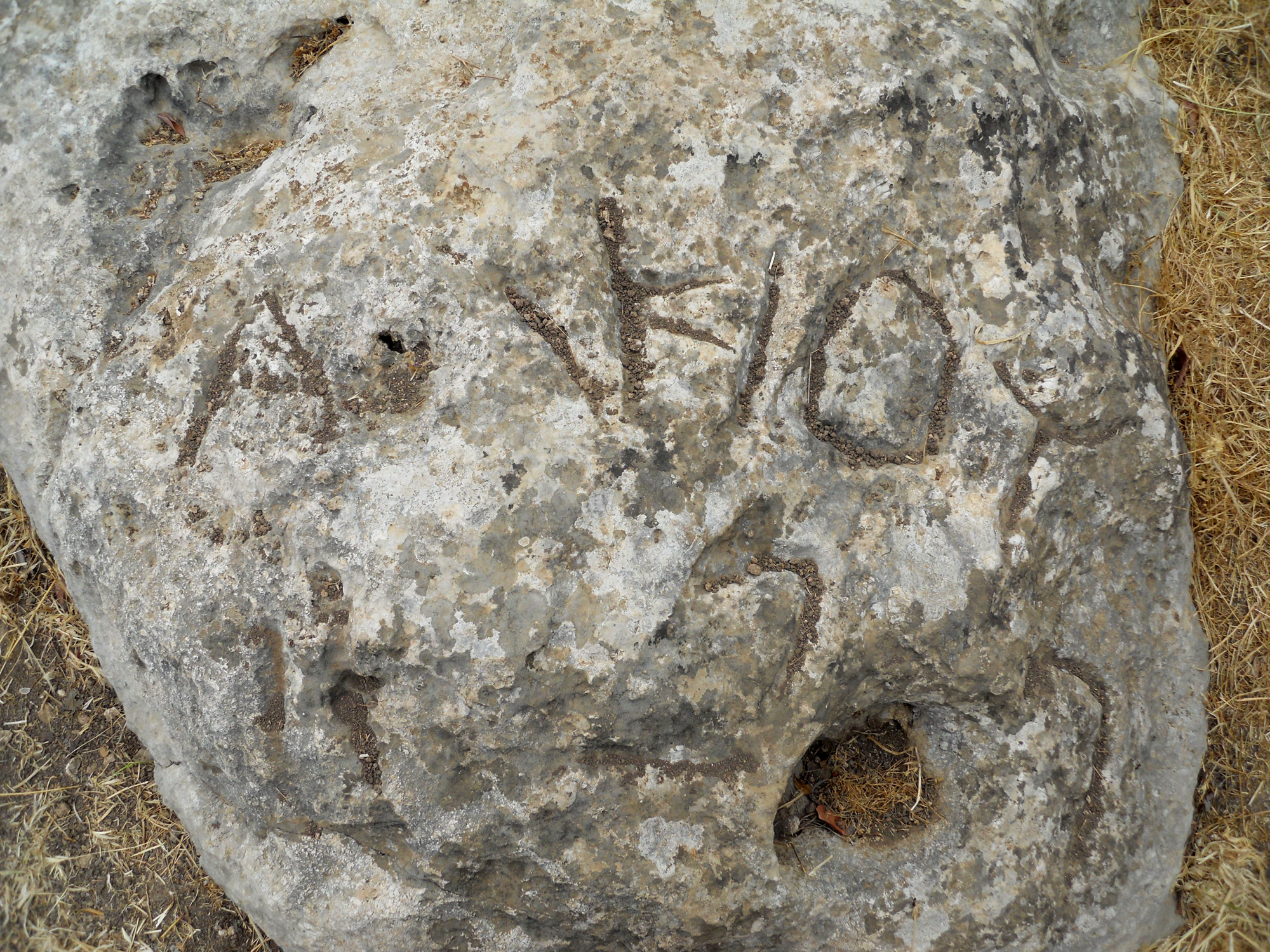 [1]
[1]JERUSALEM (BP) — An archaeological survey led by Southwestern Baptist Theological Seminary has discovered a bilingual inscription at the ancient site of Tel Gezer, Israel.
 Gezer, a biblical city, was situated on the border between the Israelite and Philistine territories guarding the route to Jerusalem. The city was given as a dowry to Pharaoh’s daughter, who married King Solomon. Gezer is well known in the later Maccabean period for its boundary stones with inscriptions in both Hebrew and Greek.
Gezer, a biblical city, was situated on the border between the Israelite and Philistine territories guarding the route to Jerusalem. The city was given as a dowry to Pharaoh’s daughter, who married King Solomon. Gezer is well known in the later Maccabean period for its boundary stones with inscriptions in both Hebrew and Greek.
In addition to finding the new inscription during the week of May 21, Southwestern’s survey team has rediscovered an inscription that had been lost to the archaeological community for more than a century.
The boundary inscriptions date to the period of conflict between the Seleucids and Maccabees. They show that the city had agricultural land around it and that the Jewish occupants were concerned over keeping their fields according to Jewish law. These discoveries are significant since the boundary stones have been frequently sought but with long time frames between new discoveries. According to the scholarship of Ronny Reich of the University of Haifa and Zvi Greenhut of the Israel Antiquities Authority, there are 12 known and published Gezer boundary stones dating to the Maccabean period.
These bilingual inscriptions in limestone bedrock ring the ancient city of Gezer on the south, east and northeast. Many of these are two-line inscriptions reading “Region of Gezer” on one line in Hebrew and “Belonging to Alkios” on the second line in Greek.
The new boundary stone inscription located by the Gezer survey team this season is the first to be found in over a decade, increasing the total number of known Gezer boundary inscriptions to 13. The new inscription is weathered and is a bilingual inscription like many of the others, with some minor differences. It is a three-line inscription, rather than the typical two, with the Greek name Alkiou on the first line (literally “belonging to Alkios”), remnants of the Hebrew word for “region of” on the second line and small remnants of the letters spelling “Gezer” on the third line. The Greek letters are larger than in other Gezer boundary inscriptions and both the Greek and Hebrew lines face the same direction.
The survey directors will seek to publish the inscription as soon as possible in an academic publication.
The second inscription discovered this season has not been seen by scholars in more than 100 years. Although originally discovered by 19th-century French explorer Charles Claremont-Ganneau, later excavator R.A.S. Macalister admitted to having spent considerable time during his 1902-09 searching for this particular boundary stone. Unable to find the inscription, he concluded that it must have been defaced to unintelligibility in the years subsequent to its discovery. Based on a published field sketch of the stone, this boundary inscription and the 19th-century discovery are one and the same.
The Tel Gezer Regional Survey, including 11 master’s and doctoral students in Southwestern’s archaeology program, is finishing its sixth season in the Aijalon Valley west of Jerusalem.
This discovery at Tel Gezer precedes Southwestern Seminary’s Dead Sea Scrolls & the Bible exhibition, July 2, 2012 through Jan. 13, 2013 in Fort Worth, Texas. The exhibition will feature numerous ancient Dead Sea Scroll fragments, including seven fragments that have never been seen publicly, as well as many other artifacts from the Bible lands. To learn more about the Dead Sea Scrolls & the Bible exhibition, visit www.seethescrolls.com [3].
To learn more about the Gezer Research Project and Southwestern Seminary’s involvement in archaeology, visit www.tandyinstitute.org [4].
–30–
Eric Mitchell is director of the Tel Gezer Regional Survey and associate professor of Old Testament and archaeology at Southwestern Baptist Theological Seminary. Jason Zan is associate director of the Tel Gezer Regional Survey and a master of arts student in archaeology and biblical studies at Southwestern. Mitchell and Zan along with Southwestern Ph.D. students Adam Dodd and Cameron Coyle have co-authored a soon-to-be-published article on the results of the first five seasons of the survey.
